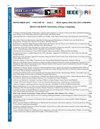De-Occlusion Face Model based on Deep Occlusor Segmentation and Deep Inpainting Models
IF 1.3
4区 工程技术
Q3 COMPUTER SCIENCE, INFORMATION SYSTEMS
引用次数: 0
Abstract
Image inpainting is a computer vision task that reconstructs missing image regions. Given its potential for various applications, it is an area of great interest. Despite advances in this field thanks to deep models such as autoencoders and generative adversarial networks, fundamental challenges persist, such as the causal interpretation of information loss and the risk of overfitting and lack of diversity in the features obtained with autoencoders. In this context, this article presents an innovative deep network model to solve occluded face inpainting. The model focuses on attributing the loss of information to the occlusion. The proposed model consists of two deep models: one for segmenting the object occluding the face, called SOCLNET, and another for reconstructing the face, IFACENET. SOCLNET is an improvement of the DeepLabv3 network by adding self-attention mechanisms. IFACENET is based on an autoencoder with an ensemble learning approach in the encoder to improve the diversity of the extracted features. SOCLNET was evaluated to demonstrate that the segmentation of occluding objects works adequately, even on out-of-distribution images. Its performance metrics were Pixel Accuracy = 0.93 and IoU = 0.788. The IFACENET model was compared against other state-of-the-art models using the Celeb-HQ database. The quantitative results of IFACENET show an average performance of SSIM = 0.95, PSNR = 26.813, and L1 = 0.261 with different mask values, being competitive with the state of the art. Additionally, qualitative results of IFACENET are shown to demonstrate the visual outcomes of face inpainting. Based on those results, it can be concluded that the proposed model effectively solves the reconstruction of occluded faces, opening new perspectives in the research of image reconstruction.基于深度咬合器分割和深度图像修复模型的去遮挡人脸模型
图像补绘是一项重建缺失图像区域的计算机视觉任务。鉴于其各种应用的潜力,这是一个非常有趣的领域。尽管由于深度模型(如自编码器和生成对抗网络)在该领域取得了进展,但基本挑战仍然存在,例如信息丢失的因果解释、过度拟合的风险以及自编码器获得的特征缺乏多样性。在此背景下,本文提出了一种创新的深度网络模型来解决遮挡的人脸喷漆。该模型侧重于将信息丢失归因于遮挡。该模型由两个深度模型组成:一个用于分割遮挡人脸的物体,称为SOCLNET,另一个用于重建人脸,称为IFACENET。socnet是DeepLabv3网络的改进,增加了自关注机制。IFACENET基于自编码器,在编码器中采用集成学习方法来提高提取特征的多样性。对SOCLNET进行了评估,以证明即使在分布外的图像上,对遮挡物体的分割也能充分工作。其性能指标为Pixel Accuracy = 0.93, IoU = 0.788。使用Celeb-HQ数据库将IFACENET模型与其他最先进的模型进行比较。IFACENET的定量结果显示,在不同掩码值下,平均SSIM = 0.95, PSNR = 26.813, L1 = 0.261,具有一定的竞争力。此外,IFACENET的定性结果显示了面部彩绘的视觉效果。结果表明,该模型有效地解决了被遮挡人脸的重建问题,为图像重建的研究开辟了新的视角。
本文章由计算机程序翻译,如有差异,请以英文原文为准。
求助全文
约1分钟内获得全文
求助全文
来源期刊

IEEE Latin America Transactions
COMPUTER SCIENCE, INFORMATION SYSTEMS-ENGINEERING, ELECTRICAL & ELECTRONIC
CiteScore
3.50
自引率
7.70%
发文量
192
审稿时长
3-8 weeks
期刊介绍:
IEEE Latin America Transactions (IEEE LATAM) is an interdisciplinary journal focused on the dissemination of original and quality research papers / review articles in Spanish and Portuguese of emerging topics in three main areas: Computing, Electric Energy and Electronics. Some of the sub-areas of the journal are, but not limited to: Automatic control, communications, instrumentation, artificial intelligence, power and industrial electronics, fault diagnosis and detection, transportation electrification, internet of things, electrical machines, circuits and systems, biomedicine and biomedical / haptic applications, secure communications, robotics, sensors and actuators, computer networks, smart grids, among others.
 求助内容:
求助内容: 应助结果提醒方式:
应助结果提醒方式:


